Cushings and EMS
Insulin resistance in horses is a symptom of both Equine Metabolic Syndrome (EMS) and Equine Cushings Disease (ECD). The horses and ponies that suffer from insulin resistance are affected by a change in the bodies response to insulin at a cellular level and therefore do not tolerate carbohydrates in their diet. From an understanding point of view, therefore, IR can be considered to be like type II diabetes, however on a physiological level the conditions are quite different.
In the horse, the reduced response to insulin causes the body to lay down extra fat which, we now know, increases the number of inflammatory mediators within the body, leaving it in a chronic state of inflammation with increased cortisol levels. This metabolically compromised state leads to an increase in stress response, and the hormone cascade that follows can be a trigger for laminitis. Also insulin activates a growth factor that allows laminae to grow, when they are not supposed to.
The symptom of IR can vary between individual animals with the majority of horses and ponies that are insulin resistant showing abnormal fat deposits, a history of laminitis of varying severity and hyperinsulinaemia. However, research has recently shown that not all obese horses and ponies are insulin resistant, whilst it is also possible for a thin horse or pony to be insulin resistant.
Treatment of IR requires a 4 pronged approach: Diagnosis, Diet, Exercise and Trim
Getting the correct diagnosis is crucial as the treatment for EMS IR and ECD IR need to be completely different and may require different drugs. Diet needs to assessed and will need to allow the horse to lose weight, if fat, but will also need to be very low in starch yet provide sufficient vitamins and minerals to enable the body to repair itself.
Exercise needs to be employed to aid weight loss, however, if the horse has been suffering from laminitis then this must be treated before exercise is enforced.
The diet of an insulin resistant horse or pony must be forage based in the form of hay and not grass. This forage must be low in starch and sugar and be made up of a timothy blend meadow grass and not rye grass. Rye grass is exceptionally bad for insulin resistant horses; similarly alfalfa or Lucerne is not ideal. The feeding of mixes and pelleted horse feed should be minimised if not removed as any feed with more than 10% starch will trigger higher insulin levels. Many insulin resistant horses cannot tolerate this level of starch and so lower values should be sought. Sadly, however, there are very few feeds on the market in the UK that have this low level of starch, with the exception of Coolstance Copra and Red Rufus Feeds.
Because we have limited the horse or pony’s access to grass and concentrate feed, we need to replace the vitamins and minerals in his diet with a good quality vitamin and mineral supplement, e.g. Global Herbs Globalvite, that is free from fillers, such as alfalfa, wheatfeed and grassmeal etc which all increase the starch value of the supplement. We need to ensure that we feed a diet high enough in all the key nutrients to encourage weight loss where necessary, without causing deficiencies that will ultimately affect his health.
You can choose from among the various options available; the best supplements and feeds for cushings and EMS.


